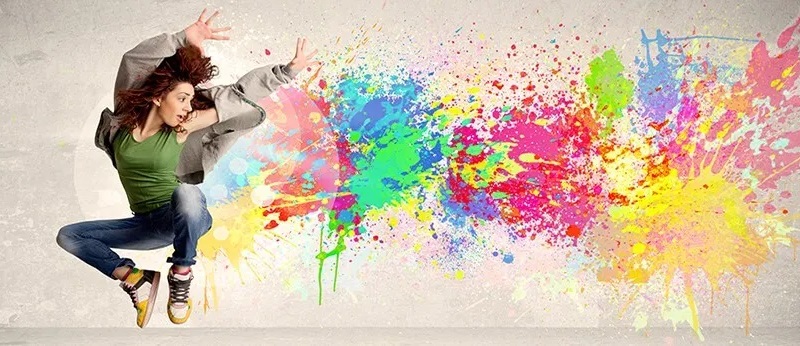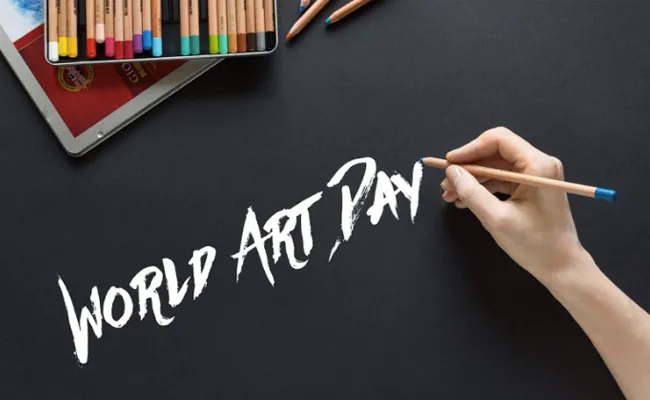Every year on April 15th, the world celebrates fine arts with a day known as World Art Day. It seeks to emphasise the value of art in diverse cultures and societies and raise awareness of global creative endeavours. The day was selected to commemorate the birthday of one of history’s most famous artists, Leonardo da Vinci, whose works have significantly influenced society and the arts.
World Art Day aims to inspire people to interact with art in all forms, whether through gallery visits, artistic creation, or cultural events. It acts as a reminder of the ability of art to unite people across boundaries and generations, as well as to inspire and challenge thought.
The variety of human civilizations and experiences is reflected in art. World Art Day offers an opportunity to acknowledge and celebrate the diversity of artistic expression globally. Innovation and creativity are fostered by art. By commemorating World Art Day, individuals encourage innovation across various industries by highlighting the value of creativity in problem-solving, communication, and personal expression.
As a universal language, art unites individuals from different backgrounds and transcends national boundaries and linguistic barriers. World Art Day encourages cross-cultural communication and understanding by providing a platform for exchanging creative concepts, methods, and viewpoints. On World Art Day, we celebrate the social contributions made by artists. It recognises how their works have shaped culture, questioned accepted wisdom, and sparked social change.
Art is essential to the economy because it supports the travel, entertainment, and educational industries. We highlight the value of sustaining the arts sector and funding cultural organisations and projects by commemorating World Art Day. World Art Day fosters art education and encourages engagement in artistic endeavours. It highlights how important arts education is for fostering empathy, creativity, and critical thinking in people of all ages. Art frequently acts as a mirror reflecting society’s goals, values, and difficulties. Engaging with art that confronts social issues, sparks conversation, and encourages positive change is made possible by World Art Day.
Language of Art and World Art Day
We know how art crosses linguistic, cultural, and geographic barriers. On World Art Day, we recognise that through the medium of art, people from all walks of life can connect and share a common human experience. Celebrating the world’s artistic diversity in forms, styles, and traditions is known as World Art Day. It acknowledges that every culture adds distinctive viewpoints and insights to the mosaic of human creation.

Encouraging creativity in society is the most crucial aspect that World Art Day highlights. It inspires people to use their ideas, try out various artistic mediums, and use their creative endeavours as a genuine means of self-expression. For those who enjoy the arts, World Art Day promotes understanding between cultures by allowing people to interact with artwork from other traditions and viewpoints. It encourages communication, compassion, and tolerance for cultural diversity. The Day of Art promotes thought and contemplation about art’s role in human existence. It asks people to think about how art shapes identity, disproves presumptions, and spurs social change.
Use World Art Day encourages the use of the arts in public policy, education, and society. It highlights the significance of artistic expression in fostering emotional well-being, empathy, and critical thinking. On World Art Day, people gather to honour and enjoy art in all its forms. It creates opportunities for community members to engage, collaborate, and share creative experiences.
History of World Art Day
The International Association of Art (IAA/AIAP), a UNESCO partner organisation, proposed World Art Day at the 17th General Assembly in Guadalajara, Mexico, in 2011. After receiving support from several nations and cultural institutions, the initiative was officially announced as World Art Day on April 15. Because April 15 falls on Leonardo da Vinci’s birthday, it is a notable date for World Art Day. Born on April 15, 1452, Leonardo da Vinci is well known for his contributions to various disciplines, including anatomy, engineering, art, and writing. His art embodies the spirit of invention, originality, and cross-disciplinary inquiry that World Art Day aims to foster.
Because April 15 falls on Leonardo da Vinci’s birthday, it is a notable date for World Art Day. Born on April 15, 1452, Leonardo da Vinci is well known for his contributions to various disciplines, including anatomy, engineering, art, and writing. His art embodies the spirit of invention, originality, and cross-disciplinary inquiry that World Art Day aims to foster.
Since its founding, communities, cultural organisations, educational institutions, and artists have planned various events and projects to commemorate World Art Day worldwide, aiming to promote cultural interchange, encourage creativity and innovation, and increase public awareness of the value of art in society, these activities could include art exhibitions, seminars, lectures, performances, and public gatherings.
World Art Day honours art’s ability to communicate across boundaries, cultures, and languages and highlights how it can improve lives, foster understanding, and create connections between individuals with different backgrounds. World Art Day has become more significant over time, and more and more nations and communities are participating in the event. People worldwide are still motivated by it to interact with art, discover their creative potential, and acknowledge the transformative power of artistic expression in influencing our world.
World Art Day Activities
As a part of World Art Day, government agencies and galleries try to promote artistic expression and present the works of local artists; numerous cities host festivals, art exhibitions, and other cultural activities. Various artistic mediums, including painting, sculpture, photography, and performance art, are frequently featured at these events. To meet artists, discover how they create, and see their most recent works, art fans can visit artists’ studios or take advantage of gallery-guided tours.
Cities may commission street art initiatives or public art displays to honour World Art Day. These installations frequently involve the local community and promote creative engagement among the general population. Educational institutions, community centres, and art organisations can hold workshops, talks, and exhibitions to advance art instruction and foster direct involvement in creative endeavours.
World Art Day is frequently publicised on social media sites like Facebook, Instagram, and Twitter using challenges, hashtags, and online exhibits. Artists and art institutions can interact with a worldwide audience by sharing their work online. Some organisations might host art contests or award ceremonies on World Art Day to honour exceptional artistic accomplishments and support up-and-coming artists.
Feature image: NDTV





